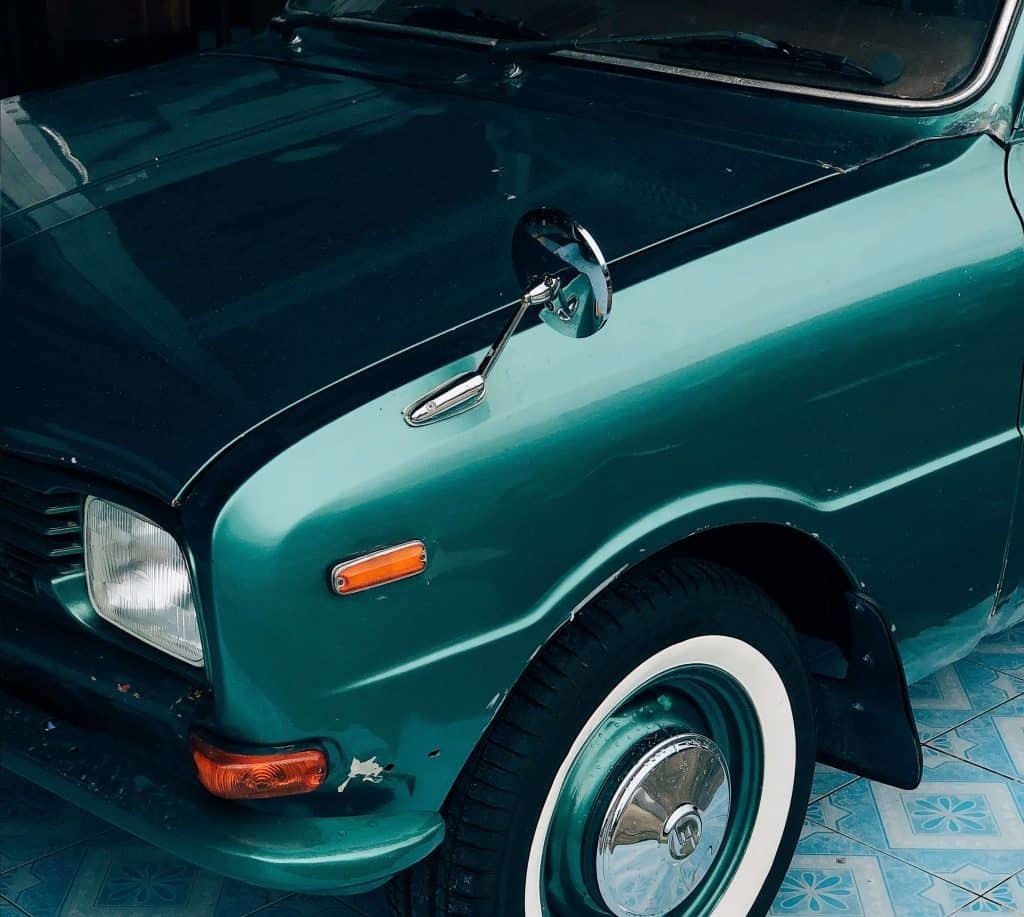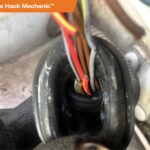Your car is more than just a vehicle; it’s a significant investment and a reflection of your personality. Discovering scratches on your car can be upsetting. However, minor scratches don’t have to ruin your car’s appearance. Knowing how to repair small scratches on your car yourself can save you money and maintain your vehicle’s pristine look.
This guide will explain how to effectively remove minor car scratches, focusing on DIY techniques and the right products to use. We’ll cover identifying the type of scratch and provide step-by-step instructions to restore your car’s finish.
Understanding the Types of Car Scratches
Before you start the repair process, it’s crucial to understand the type of scratch your car has. Car paint typically consists of three layers:
- Clear Coat: This is the top layer, providing shine and protection against environmental damage.
- Base Coat (Color Coat): This layer gives your car its color.
- Primer Coat: This is the foundation layer that helps paint adhere to the metal body and prevents rust.
Scratches can affect one or more of these layers, determining the repair method.
1. Clear Coat Scratches: Surface Level Damage
Clear coat scratches are the most common and least severe. They only affect the outermost clear coat layer. These are usually caused by minor abrasions like:
- Branches brushing against the car
- Minor brushes with shopping carts
- Improper car washing techniques
These scratches are typically shallow and often repairable with simple DIY methods.
2. Base Coat Scratches: Deeper than Surface
Base coat scratches penetrate through the clear coat and into the color base coat layer. These are caused by slightly more significant impacts, such as:
- Keying incidents
- Slightly larger road debris
- More forceful brushes against objects
Repairing base coat scratches is still manageable at home but requires a bit more attention and specific products.
3. Primer Coat Scratches: Deep and Requiring More Attention
Primer coat scratches are the deepest type, going through the clear coat, base coat, and reaching the primer layer. These are usually caused by:
- Deeper scrapes and impacts
- Accidents
- Vandalism
Primer scratches may sometimes require professional repair, but for smaller instances, DIY methods can still be effective.
A close-up view of a car scratch, highlighting the damage to the paint and the layers involved in a typical automotive finish.
How to Identify the Scratch Depth
Knowing the depth of the scratch is key to choosing the right repair technique. Here’s how to identify it:
The Fingernail Test: Gently run your fingernail across the scratch.
- Clear Coat Scratch: If your fingernail doesn’t catch and the scratch feels smooth, it’s likely a clear coat scratch.
- Base Coat or Primer Scratch: If your fingernail catches in the scratch, it’s deeper, possibly reaching the base coat or primer. The more it catches, the deeper the scratch.
The Polish Test: Use car polish to test the scratch depth.
- Apply a small amount of car polish to a microfiber cloth.
- Rub the polish onto the scratched area in a circular motion.
- Wipe away the excess polish.
- Clear Coat Scratch: If the scratch disappears, it’s a clear coat scratch.
- Deeper Scratch: If the scratch remains visible, it’s likely a base coat or primer scratch.
Step-by-Step Guide to Repairing Small Car Scratches
The repair process varies depending on the scratch type. Here’s a breakdown of how to repair each type of small car scratch:
Repairing Clear Coat Scratches: Simple and Effective
These surface scratches are the easiest to fix. Here’s how:
Step 1: Thoroughly Clean the Scratched Area
Begin by cleaning the area around the scratch with car wash soap and water. This removes dirt and debris that could further scratch the paint during the repair process. Rinse thoroughly and dry the area completely with a clean microfiber towel.
Step 2: Apply Scratch Remover Compound
Apply a pea-sized amount of scratch remover compound to a clean microfiber applicator pad or cloth. Gently rub the compound into the scratch using circular motions. Apply light to medium pressure. Continue buffing for a few minutes until the scratch starts to disappear.
Step 3: Polish the Area to Restore Shine
Once the scratch is removed, use a car polish to restore the shine to the repaired area. Apply a small amount of car polish to a clean microfiber cloth and buff the area gently until a glossy finish is achieved. This step ensures a seamless blend with the surrounding paint.
Repairing Base Coat Scratches: Using Touch-Up Paint
For scratches that have penetrated the clear coat, touch-up paint is needed.
Step 1: Clean the Area Meticulously
As with clear coat scratches, start by cleaning the area with car wash soap and water. Dry it completely. Ensure no contaminants are present that could interfere with paint adhesion.
Step 2: Apply Touch-Up Paint Carefully
Using a fine-tipped applicator (like a toothpick or a small brush that often comes with touch-up paint kits), carefully apply a very thin layer of touch-up paint into the scratch. Apply in thin coats, allowing each coat to dry completely before applying the next. This prevents paint from clumping and ensures a smoother finish. Let the paint dry fully, usually for a few hours or as per the paint manufacturer’s instructions.
Step 3: Level the Touch-Up Paint with Sandpaper
Once the touch-up paint is completely dry, you may notice it’s slightly raised above the original paint. To level it, use 2000-grit sandpaper. Wet sand the area lightly by first soaking the sandpaper in water and adding a few drops of car wash soap as lubricant. Gently sand the touched-up paint until it’s level with the surrounding paint. Be careful not to sand into the surrounding clear coat.
Step 4: Use Rubbing Compound to Refine the Surface
After sanding, the area might look hazy. Apply a small amount of rubbing compound to a microfiber cloth and buff the sanded area using circular motions. This will help to remove sanding marks and further smooth the surface.
Step 5: Polish to Achieve a Perfect Finish
Finally, use car polish on a clean microfiber cloth to polish the area. Buff gently to restore the shine and blend the repaired scratch seamlessly with the rest of your car’s paintwork.
Repairing Primer Coat Scratches: More Involved Steps
Repairing primer coat scratches is more complex and requires patience.
Step 1: Thoroughly Clean the Damaged Area
Clean the area around the scratch with car wash soap and water and dry it completely.
Step 2: Sand to Remove Rough Edges
Use 1000-grit sandpaper to gently sand the edges of the scratch to remove any rough or loose paint. Then, switch to 2000-grit sandpaper to smooth out the area further. Wet sanding is recommended for a smoother finish.
Step 3: Apply Touch-Up Paint in Thin Layers
Apply touch-up paint to the scratch using a fine applicator. Apply multiple thin coats, allowing each to dry completely. Building up thin layers prevents drips and ensures proper drying and adhesion.
Step 4: Wet Sand to Level the Paint
After the touch-up paint is fully dry, wet sand the area with 2000-grit sandpaper to level the touch-up paint with the surrounding surface.
Step 5: Use Rubbing Compound to Smooth
Apply rubbing compound to a microfiber cloth and buff the sanded area to remove sanding marks and smooth the surface.
Step 6: Polish for Final Shine
Finish by polishing the area with car polish on a clean microfiber cloth to restore the gloss and seamlessly blend the repair into the surrounding paint.
Important Note: For very deep primer scratches or if you’re uncomfortable with these steps, consider seeking professional auto detailing services. Professionals have specialized tools and expertise for more complex repairs.
Tips to Prevent Car Scratches
Prevention is always better than cure. Here are some tips to minimize the risk of car scratches:
- Regular Waxing: Apply car wax regularly. Wax adds an extra protective layer to the clear coat, making it more resistant to scratches.
- Park Smart: Park in garages or carports whenever possible to shield your car from weather and potential hazards. Avoid parking near trees or bushes that could scratch your car.
- Wash Your Car Properly: Wash your car regularly to remove dirt and debris. Use high-quality car wash soap and a microfiber wash mitt.
- Microfiber Cloths: Always use microfiber cloths for washing and drying to prevent swirl marks and scratches.
- Avoid Automatic Car Washes: Automatic car washes with brushes can often cause scratches and swirl marks. Opt for touchless car washes or hand washing.
- Use a Car Cover: If parking outdoors, use a car cover to protect your car from environmental elements and accidental scratches.
Final Thoughts on DIY Car Scratch Repair
Repairing small scratches on your car at home is achievable and a cost-effective way to maintain your vehicle’s appearance. By understanding the types of scratches and following the appropriate steps, you can effectively restore your car’s finish.
While DIY scratch repair is possible for minor damage, remember that professional auto detailing services are always an option for deeper scratches or if you prefer expert handling. Maintaining your car’s paint not only keeps it looking great but also helps preserve its resale value.



